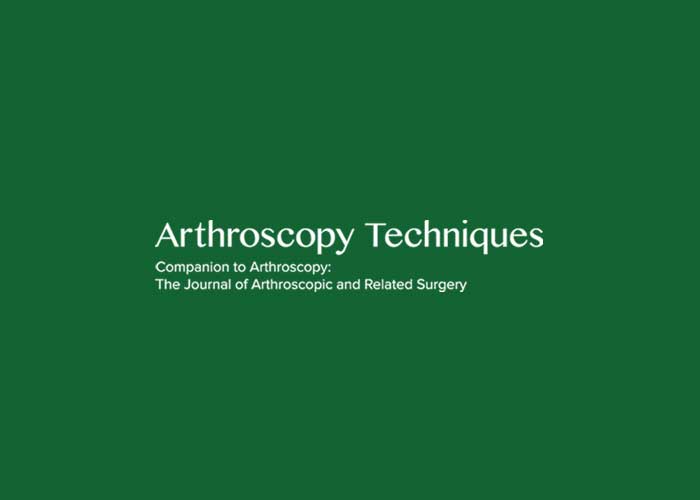
Authors:
Ayham Jaber, M.D., Tyler J. Uppstrom, M.D., Christopher J. Hawryluk, M.B.S., Michael Nocek, B.A., Yazan Jaber, M.D., Peter J. Millett, M.D., M.Sc.
Abstract:
Posterior shoulder instability is increasingly recognized, particularly among athletes and individuals subjected to repetitive posterior loading. Posterior dislocations can result in a posterior bony Bankart lesion, which presents a unique challenge in arthroscopic repair as a result of the bony involvement and the technical challenges associated with the procedure. The arthroscopic posterior bony Bankart Bridge presents a reliable, minimally invasive treatment option.
You can read the study here: Arthroscopic Posterior Bony Bankart Bridge for Posterior Bony Bankart Lesions
Video credit:
Ayham Jaber, M.D., Tyler J. Uppstrom, M.D., Christopher J. Hawryluk, M.B.S., Michael Nocek, B.A., Yazan Jaber, M.D., Peter J. Millett, M.D., M.Sc.
As posted in Arthroscopy Techniques
Study name:
Arthroscopic Posterior Bony Bankart Bridge for Posterior Bony Bankart Lesions
Summary:
This technique video details the posterior bony Bankart bridge technique for treating posterior bony Bankart lesions in a 19-year-old collegiate football player with chronic posterior shoulder instability. Diagnostic arthroscopy revealed a posterior bony lesion with cartilage disruption and an anterior labral tear. The anterior labrum was repaired arthroscopically using knotless fiber anchors. The posterior lesion was then debrided, microfractured, and repaired using a series of 1.8 mm knotless FiberTak and 2.9 mm PushLock anchors to achieve anatomic reduction and compression of the bony fragment. Additional anchors were placed as needed to reinforce the posterior capsulolabral complex. Final assessment confirmed restored posterior shoulder stability, and a structured postoperative rehabilitation protocol was initiated immediately after surgery.
